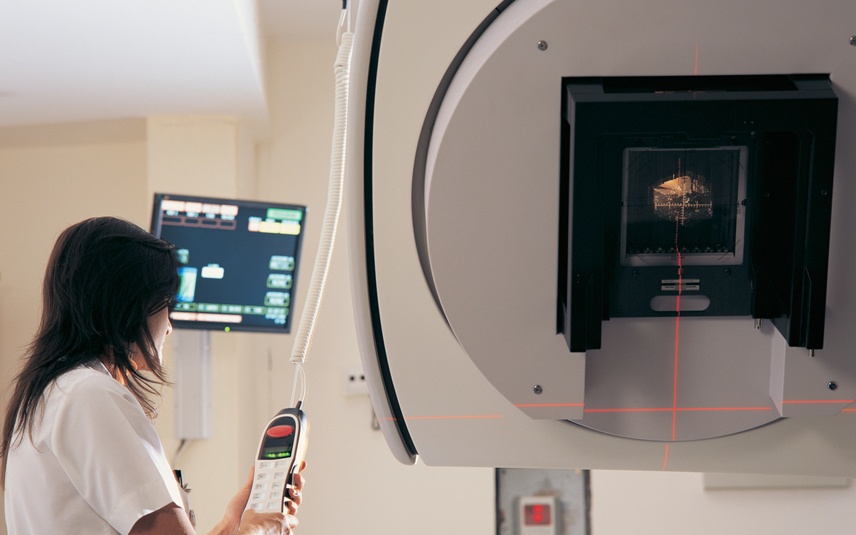For decades, avascular necrosis (AVN) of the femoral head was regarded as a degenerative...
Find Relief from Symptoms of Radiation Damage

Think about it: a cancer diagnosis can turn your life upside down. Then you and your physicians arrive at a treatment plan that includes radiation therapy. Even if it's targeted radiation, you may incur radiation damage, resulting in chronic pain, incontinence, bleeding during urination (hematuria), and other symptoms that negatively impact your quality of life.
Radiation-related symptoms may develop years after you had radiation therapy. They could last for years, even if your cancer is in remission or you've been told that you’re cancer-free.
The good news is that there are ways to prevent the damage before it occurs, to reduce its impact if it's already happened, and to chart a path to recovery.
One of the most effective treatments for healing damaged radiated tissue is hyperbaric oxygen therapy (HBOT), which has an average improvement rate of nearly 80 percent. HBOT is a medical treatment that involves breathing 100 percent oxygen under pressure. The pressurized oxygen is dissolved in the blood stream, regenerating blood vessels, decreasing inflammation, and re-populating the radiated area with healthy stem cells.
Radiation therapy is commonly used to treat a cancer diagnosis. Oncologists try to protect their patients undergoing radiation therapy by using lower dosages and precision targeting. Nevertheless, UCLA Medical Center estimates that 10-15 percent of patients who receive radiation therapy will experience chronic radiation damage.
Improve the Outcome of Radiation Therapy
You can try to minimize the chances of radiation tissue damage, but delayed radiation damage may occur. Resulting problems can range from mild to moderate to even severely debilitating.
Here are two proactive steps to take to improve the outcome of radiation therapy:
1. Hyperbaric Oxygen Therapy
For those already suffering from the effects of radiation injury, hyperbaric oxygen therapy (HBOT) has prove to be an effective treatment for reducing and ameliorating symptoms. Furthermore, a growing body of literature supports the use of HBOT as a prophylactic treatment in patients requiring additional surgery on a previously radiated area.
Due to the damage caused by prior radiotherapy, irradiated tissue is at an increased risk of healing complications. Studies have measured the utility of prophylactic HBOT for reducing severe and debilitating complications. As shown by the Marx Protocols, when patients receive prophylactic HBOT surrounding dental extractions, incidence of osteoradionecrosis, a debilitating complication, is decreased from 29.9% to 5.4% (1). Further studies illustrate that prophylactic HBOT surrounding invasive procedures of the head and neck increase prompt and uncomplicated healing from 60% to 87% (2).
2. Diet, Nutritional Supplements and Food Preparation
To limit the effects of acute radiation damage, you can also use certain dietary, supplemental and herbal remedies. Antioxidants and vitamins C and E, in particular, have been shown to "reduce consequences" associated with radiation damage.
Patients are encouraged to discuss all dietary, supplement and herbal remedies with a nutritionist or a physician before making any changes in their eating habits.
Types of Radiation Damage
There are two different types of radiation damage: acute and delayed.
Acute radiation damage typically arises very soon after radiation treatment. Although it can be debilitating for many patients, it also tends to resolve itself relatively quickly.
Delayed radiation damage can occur from six months to years (sometimes even decades) after a person has received radiation therapy. Symptoms of chronic radiation injury can include: intermittent or chronic pain, erectile dysfunction, neurologic dysfunction, chronic diarrhea or constipation, inability to salivate, ringing in ears, laryngitis, difficulty swallowing, difficulty opening the jaw, wounds that don’t heal, bleeding, bowel or bladder incontinence, chronic abdominal or rectal pain, and nerve dysfunction.
If you or a loved one have experienced any of the debilitating effects from delayed radiation damage, then we encourage you to give HBOT, the best curative therapy for radiation damage, a try.
{Updated: February 11, 2019}
References
1. Marx RE, Johnson RP, Kline SN. Prevention of Osteoradionecrosis: A Randomized Prospective Clinical Trial of Hyperbaric Oxygen versus Penicillin. J Am Dent Assoc. 1985;11:49-54.
2. Feldmeier JJ, Newman R, Davolt DA, Heimbach RD, Newman NK, Hernandez LC. Prophylactic Hyperbaric Oxygen for Patients Undergoing Salvage for Recurrent Head and Neck Cancers Following Full Course Irradiation (abstract). Undersea Hyper Med. 1998;25(Suppl):10.

Written by Alan Katz, MD, FUHM, FACEP, FAAEM
Dr. Alan Katz, National Medical Director of Hyperbaric Medical Solutions (HMS), is double board certified in Emergency Medicine and Hyperbaric Medicine. He directs clinical operations, education and research initiatives, and the integration of other regenerative medicine therapies....
Read More


